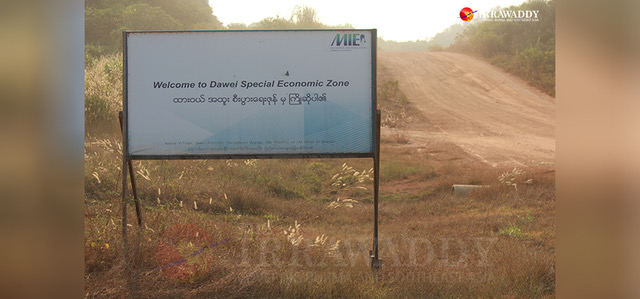YANGON — Japan has decided to invest in the full phase implementation of the Dawei Special Economic Zone (SEZ) in southern Myanmar, Japan’s ambassador to Myanmar, Ichiro Maruyama, has told The Irrawaddy in an exclusive interview.
The US$8-billion (10.5 trillion) project is set to be Southeast Asia’s largest industrial complex.
Maruyama said discussions are continuing with his government deciding to help implement both the deep-sea port and SEZ with the private sector.
The long-delayed project is one of the National League for Democracy’s priorities after it repeatedly sought Japanese governmental involvement. Tokyo finally agreed to take part after many Chinese companies submitted proposals to invest in Dawei.
Maruyama said Japan had previously intended to focus on the expansion of the Thilawa SEZ in Yangon, which State Counselor Daw Aung San Suu Kyi often mentions as a crowning achievement for the country. However, Myanmar’s enthusiasm for the Dawei SEZ pushed Japan’s involvement in the Tanintharyi Region project.
Maruyama said: “We are currently studying the deep-sea port project. After the study, we will discuss how we can implement the project.”
He stressed Japan will also discuss how to finance the project, whether through official development assistance or other methods.
The SEZ is on the Andaman Sea and can reach the Gulf of Thailand by road across the Thai border. It could potentially connect the Indian and Pacific oceans, Southeast Asia and South Asia and beyond. The SEZ could also play a vital role in Japan’s Mekong Southern Economic Corridor, which aims to connect Vietnam, Cambodia and Thailand to southern Myanmar.

The 196-square-km project includes a deep seaport and is expected to boost firms using the crowded Malacca Strait. The planned project also includes high-tech industrial zones, information technology developments, export-processing, transport hubs, business services and other infrastructure.
The project was originally backed by the Thai government and Italian-Thai Development PCL (ITD) was granted a 75-year concession to develop and attract investment to Dawei SEZ. But financial constraints saw ITD withdraw from the agreement in 2013.
In 2015, Myanmar and Thailand renegotiated the original agreement to allow ITD and its consortiums to develop up to 27 square km of the initial phase of infrastructure projects. Last year, Myanmar and ITD completed their final negotiations for the construction of the initial phase. However, the company is reluctant to begin the project.
Thailand and Myanmar agreed in October 2019 to begin the “initial” and “full” phases of the project at the same time. Moreover, they decided to invite third-party investment for the SEZ, including for the deep seaport and electricity supply.
The Japan International Cooperation Agency (JICA) conducted a fact-finding study based on Thailand’s Neighboring Countries Economic Development Cooperation Agency (NEDA) existing master plan. According to the Dawei SEZ management committee, NEDA’s master plan was more focused on creating a heavy industrial complex, while JICA’s study looked at lighter industries.
The management committee said it has received an official proposal from the Japanese government to help implement the Dawei SEZ in full.
The committee chairman, Dr. Tun Naing, said the three countries must cooperate while taking advantage of the technical assistance proposed by the Japanese.
You may also like these stories:
Nine Firms Qualify to Challenge Chinese Proposal for Myanmar’s New Yangon City Project
Myanmar’s Central Bank Updates Interbank Payment Network
US Delegation Looks to Boost Investment in Myanmar

















